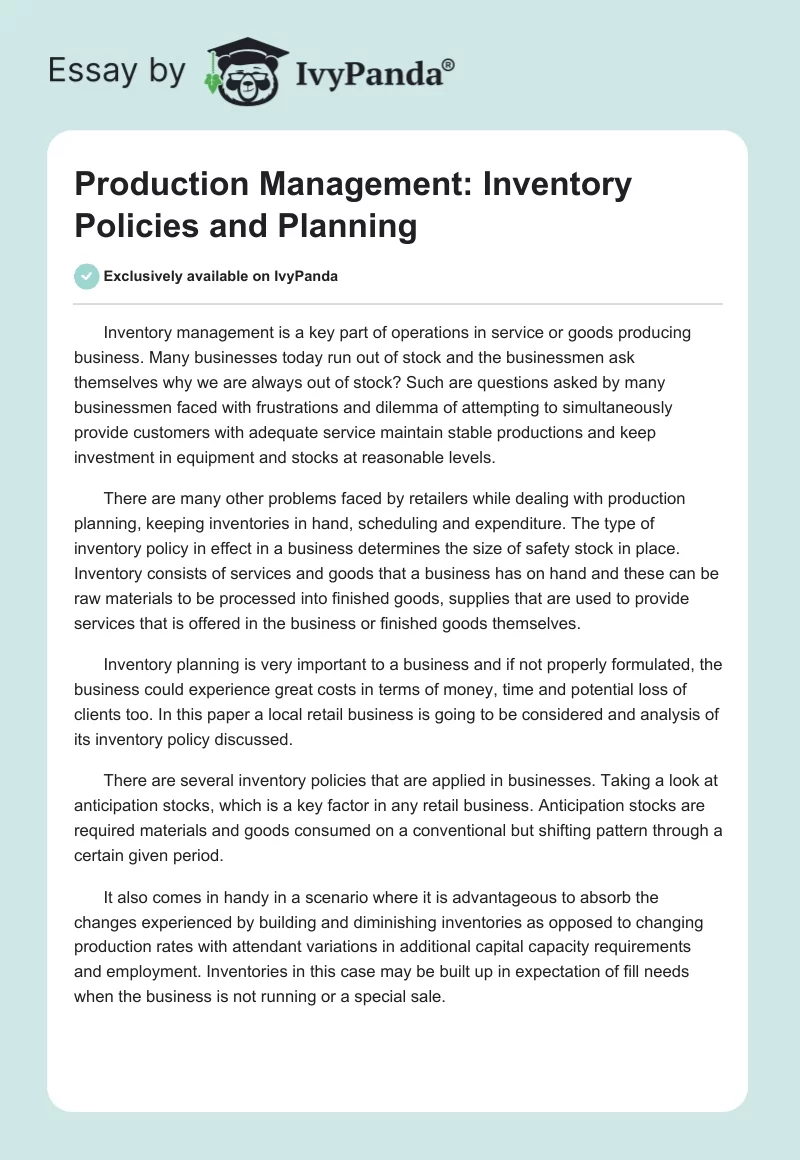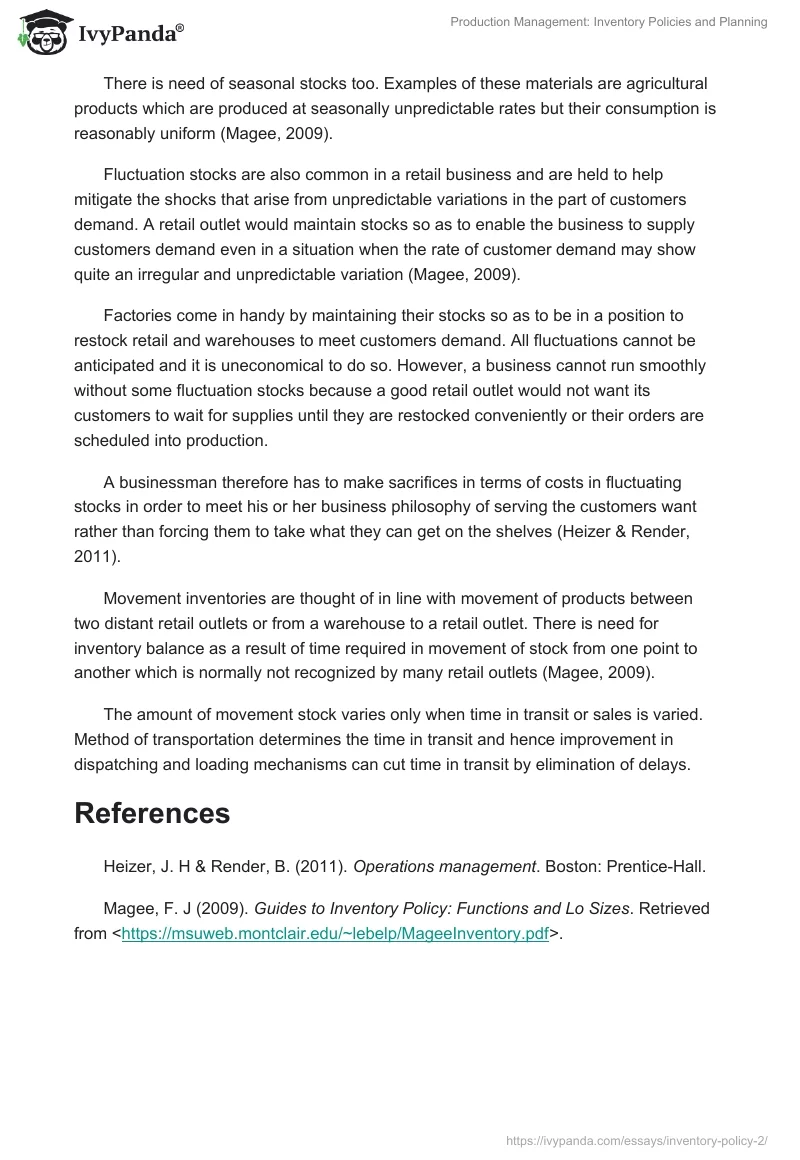Inventory management is a key part of operations in service or goods producing business. Many businesses today run out of stock and the businessmen ask themselves why we are always out of stock? Such are questions asked by many businessmen faced with frustrations and dilemma of attempting to simultaneously provide customers with adequate service maintain stable productions and keep investment in equipment and stocks at reasonable levels.
There are many other problems faced by retailers while dealing with production planning, keeping inventories in hand, scheduling and expenditure. The type of inventory policy in effect in a business determines the size of safety stock in place. Inventory consists of services and goods that a business has on hand and these can be raw materials to be processed into finished goods, supplies that are used to provide services that is offered in the business or finished goods themselves.
Inventory planning is very important to a business and if not properly formulated, the business could experience great costs in terms of money, time and potential loss of clients too. In this paper a local retail business is going to be considered and analysis of its inventory policy discussed.
There are several inventory policies that are applied in businesses. Taking a look at anticipation stocks, which is a key factor in any retail business. Anticipation stocks are required materials and goods consumed on a conventional but shifting pattern through a certain given period.
It also comes in handy in a scenario where it is advantageous to absorb the changes experienced by building and diminishing inventories as opposed to changing production rates with attendant variations in additional capital capacity requirements and employment. Inventories in this case may be built up in expectation of fill needs when the business is not running or a special sale.
There is need of seasonal stocks too. Examples of these materials are agricultural products which are produced at seasonally unpredictable rates but their consumption is reasonably uniform (Magee, 2009).
Fluctuation stocks are also common in a retail business and are held to help mitigate the shocks that arise from unpredictable variations in the part of customers demand. A retail outlet would maintain stocks so as to enable the business to supply customers demand even in a situation when the rate of customer demand may show quite an irregular and unpredictable variation (Magee, 2009).
Factories come in handy by maintaining their stocks so as to be in a position to restock retail and warehouses to meet customers demand. All fluctuations cannot be anticipated and it is uneconomical to do so. However, a business cannot run smoothly without some fluctuation stocks because a good retail outlet would not want its customers to wait for supplies until they are restocked conveniently or their orders are scheduled into production.
A businessman therefore has to make sacrifices in terms of costs in fluctuating stocks in order to meet his or her business philosophy of serving the customers want rather than forcing them to take what they can get on the shelves (Heizer & Render, 2011).
Movement inventories are thought of in line with movement of products between two distant retail outlets or from a warehouse to a retail outlet. There is need for inventory balance as a result of time required in movement of stock from one point to another which is normally not recognized by many retail outlets (Magee, 2009).
The amount of movement stock varies only when time in transit or sales is varied. Method of transportation determines the time in transit and hence improvement in dispatching and loading mechanisms can cut time in transit by elimination of delays.
References
Heizer, J. H & Render, B. (2011). Operations management. Boston: Prentice-Hall.
Magee, F. J (2009). Guides to Inventory Policy: Functions and Lo Sizes. Retrieved from <https://msuweb.montclair.edu/~lebelp/MageeInventory.pdf>.


